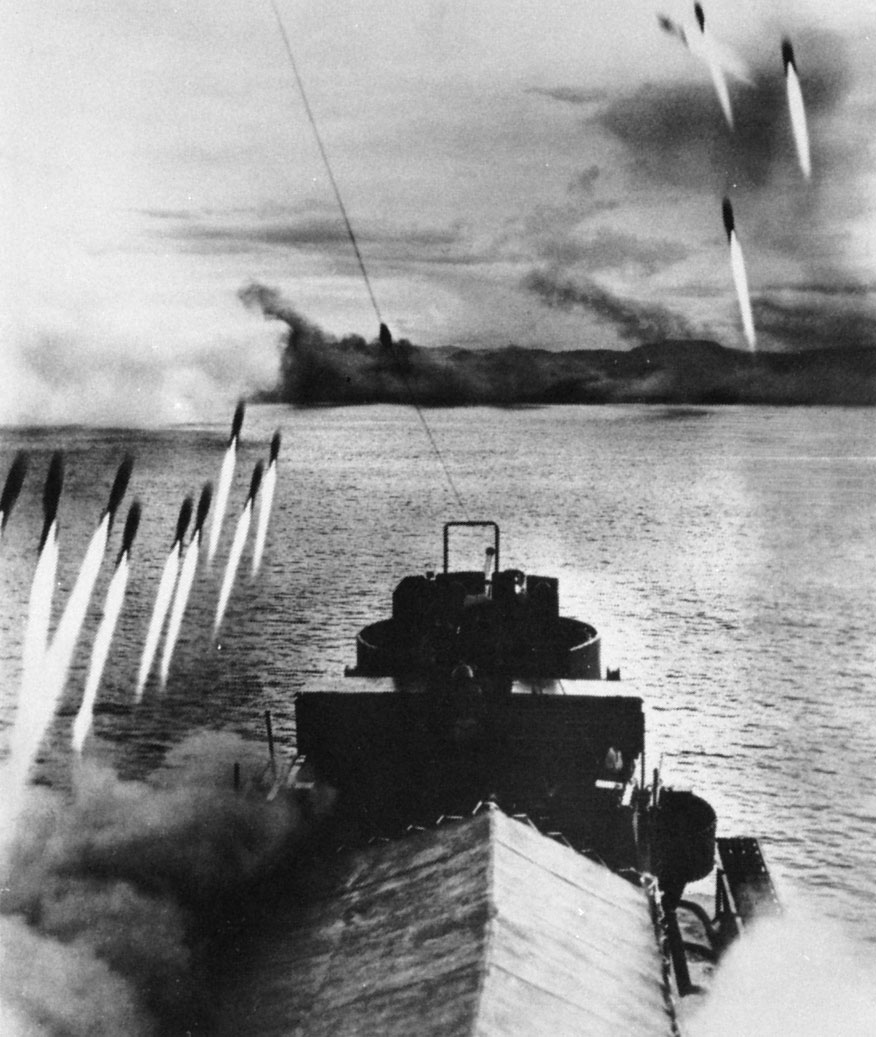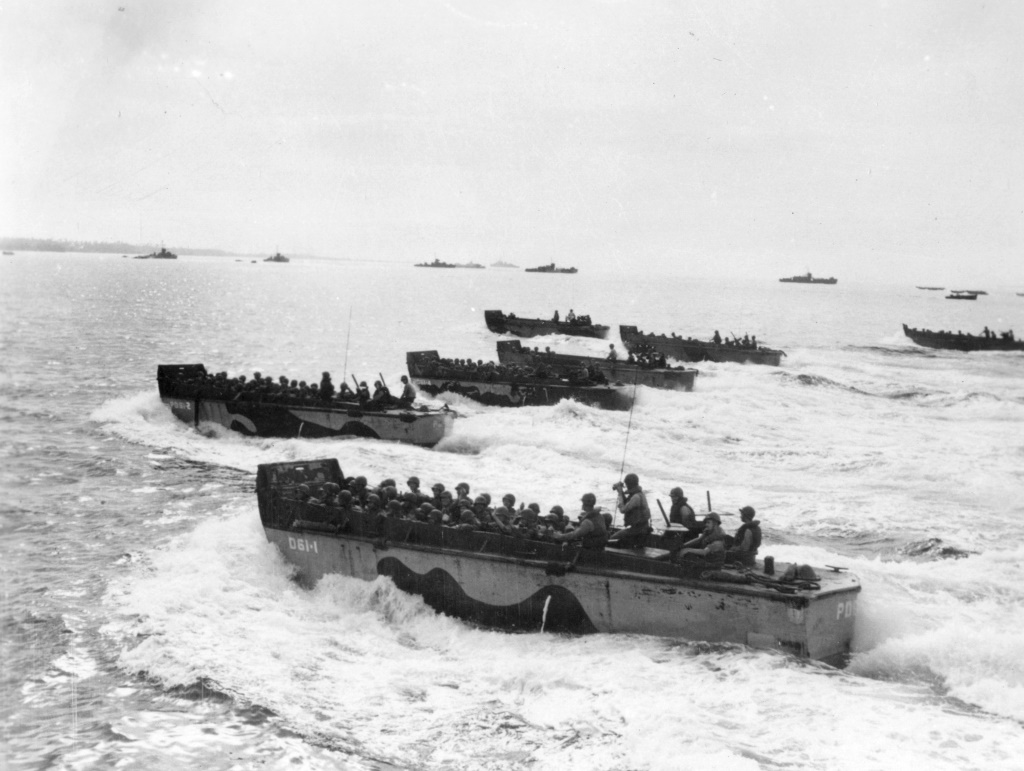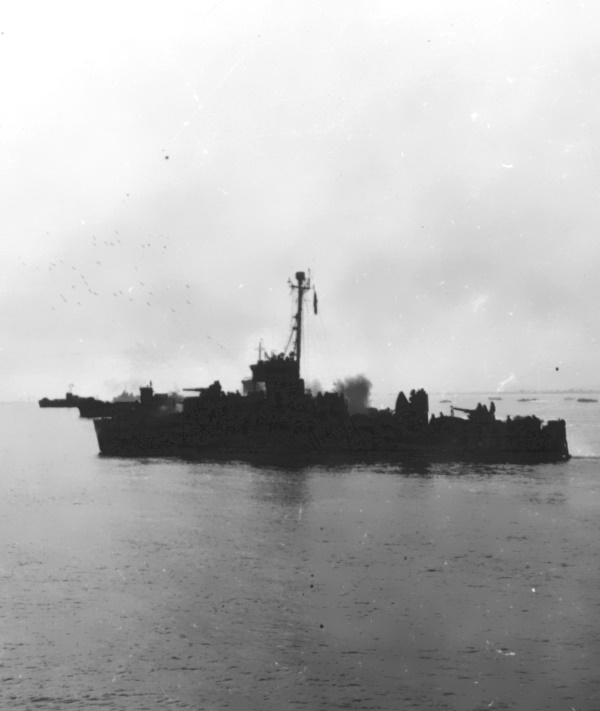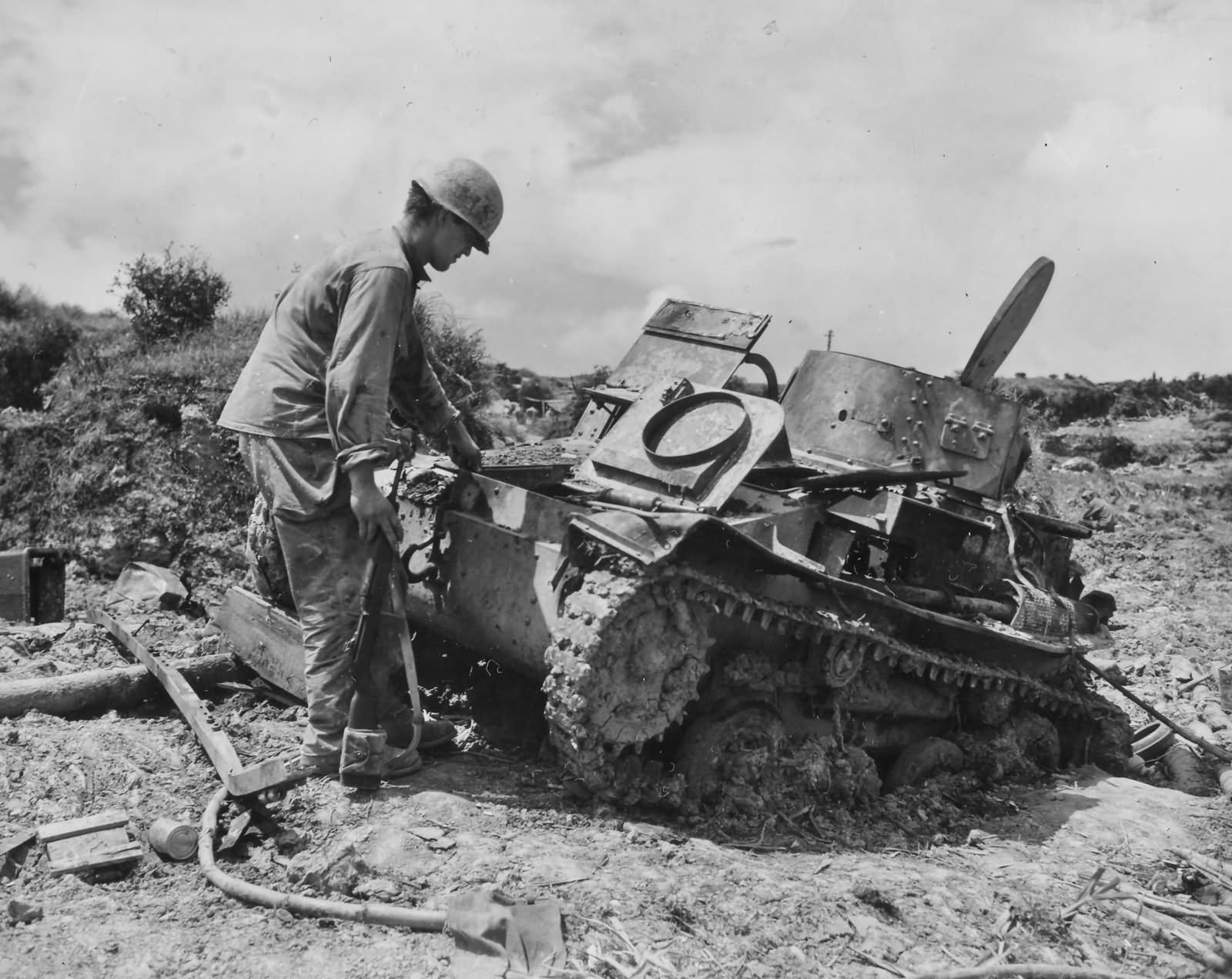The G-1 Plan
During the staff planning phase of the Victor V operation, the G-1 section prepared a personnel annex to the division administrative order. Due to the peculiarities of an amphibious operation on a division level, the administrative order by necessity was habitually a bulky document. In addition to the normal G-1 items in the personnel annex, it was necessary to include instructions on finance matters, civil affairs, the operation of division and unit APOs, and the disposition and treatment of recovered allied prisoners of war. Based on directives of higher headquarters the Allied Prisoner of War recovery plan required two pages of detailed instructions. Dissemination of information of a G-1 nature prior to the operation was accomplished by the distribution of the administrative order, conferences, and personal staff visits to subordinate units. As soon as each major detached unit returned to Mindoro for staging the S-1s of the units were briefed by the G-1 in a personal conference on the various personnel aspects of the approaching operation. Due to the fact that all S-1s had been functioning in their positions for a considerable time, the briefing was relatively simple and expeditious. Profiting from the experience of previous combat much of the detailed personnel functioning had been condensed to SOP procedures. No major problems were anticipated in the G-1 activities on this particular operation.
It was mandatory that plans for the amphibious movement of the division headquarters be carefully formulated by G-1 with the Headquarters Commandant. Due to a lack of shipping, many of the staff sections were deprived of vehicle assignments normally at their disposal. Staff section requests for passenger space on the various echelons were considered and then edited to fit the shipping allocations. G-4 coordinated the requests of the technical staff and services who desired to accompany the assault command group and the R 2 days echelons. In many instances, the editing was a ruthless procedure with the organization of the various staff sections being necessarily sacrificed to conform to available ship space. The Chief of Staff was called upon to make final decisions in all cases where agreements could not be reached with staff heads concerned. This situation was further complicated by the last-minute unannounced arrival of personnel and equipment from higher headquarters to join the assault elements of the command post. These included one Dodges radio van from Corps HQ with personnel, a combat photographer team from GHQ with transportation, and a large Support Air Party with personnel and considerable transportation. To include these units, loading tables were readjusted again by dropping the least essential division staff sections to a lower priority echelon of shipping. HQ personnel was split with portions of staff sections on several ships to minimize losses and ensure continuity of operations should any one of the vessels be knocked out by enemy action. The ‘R’ Day and ‘R’ +2 Days command post occupied space on the following vessels with other elements of the division, 1 Amphibious Flagship (Div CG & party); 1 Cutter, Coast Guard type (ADC & party); 2 LSTs (Landing Ship Tank); 2 LCIs (Landing Craft Infantry); 1 LSM (Landing Ship Medium) and 1 LCT (Landing Craft Tank).
The distribution of headquarters personnel into the two assault echelons was as follows: R Day Echelon: CG & Aides; ADC and Aides; Chief of Staff; G-1 (including 1 AG Officer, 2 clerks, 1 half QM Graves Registration Section); G-2 (including minimum personnel of Order Battle, CIC, Photo Interpretation and Language Detachment (ATIS) Teams); G-3; G-4; CWS Officer (-) section; Chaplain (-) half of section; PRO; HQ Comdt; Regtl Ln Off; 21-RCT; Combat Photo Team; Attached Support Air Party and HQ Co; R +2 Days Echelon: Division Surgeon Section; Medical Det, Hq Sp Trips; Chaplain (half of the section); Red Cross Field Director; Order of Battle Team; Photo Interpretation Team; CIC Team; Language Detachment (ATIS); I&E Section; Judge Advocate & two clerks; Finance Detachment (-) and CVS section. Division special staff officers present on the assault echelon but not shown above were Provost Marshal, Signal Officer, Ordnance Officer, Engineer Officer, and Quartermaster. These staff representatives traveled with the assault echelons of their various organizations. The inclusion of the Division Judge Advocate is explained by the fact that this staff officer functioned as a Division Civil Affairs officer in addition to his normal duties.
The inclusion of a small finance detachment was on the order of higher headquarters to make immediate payments for Filipino labor which might be utilized in the early organization of supply dumps on the beachhead as well as for the prompt redemption of improvised guerrilla currency which had been in circulation during the Jap occupation. All other division headquarters staff sections remained in the Division rear-echelon under the command of the 24-ID Inspector General who was the senior officer of those remaining to follow on the R+10 Days rear-echelon lift. For this operation, the G-1 section was supplemented with one NCO from the Adjutant General’s section to function as a records reports and statistical clerk. One officer and two enlisted men from the Adjutant General’s section accompanied the G-1 section to serve as advance AG representatives. This AG group was deemed necessary to handle any casualty reporting that occurred as well as provide custodial service for outbound mail until regular postal service could be re-established. The belated arrival of a QM Graves Registration Section a day prior to sailing made it necessary to split the section between the G-1 section in the assault shipping and the QM Company advance elements on the R +2 lift as an expedient. Upon arrival in the objective area, all of the Graves Registration personnel would revert to the control of the Division QM.
After an uneventful four days sea voyage, the division convoy stood off at Parang, Mindanao, early on the morning of April 17, 1945. At 0650, the preliminary naval and air bombardment commenced simultaneously to soften up the assault beaches. The naval craft was able to deliver rocket fire at close range in addition to normal naval gun support. At 0800, the 3/21-IR successfully landed at Malabang and proceeded to secure the airfield as planned. At 0900, the 19-RCT commenced landing operations at Parang, reorganized, and pushed out to establish the beachhead perimeter. The two beaches were excellent but extremely narrow. The Parang Beach was only 500 yards long for assault purposes. Initial resistance on the two beaches was practically non-existent. The 21-RCT (-) landed behind the 19-RCT after clearing Bongo Island in the Parang Harbor and then pushed out to strengthen the perimeter already established by the 19-RCT. Leading elements moving out of the perimeter to the southeast found that every bridge, of which there were many, across streams leading to the coast, had been destroyed. Recon to the east encountered only light opposition and by the end of R Day a beachhead approximately 4000 yards deep at Parang had been established and the Malabang Airstrip was receiving traffic to the north.
On R +1 Day, elements of 21-RCT assaulted Cotabato to the south amphibiously. Recon began at once of the Mindanao River to determine if the river route was satisfactory to support troop movement inland. This was done with the assistance of the attached engineer boat and shore units and naval cooperation. The 19-RCT continued to push inland. By the evening of R +1, the division had accomplished its initial mission assigned by the 8-A. The Malabang-Parang-Cotabato area was secure with a substantial beachhead established. This R +5 Days objective of the 8-A was accomplished four days ahead of schedule. During the next few days, the 19-RCT continued to push aggressively inland. Heat exhaustion was prevalent due to the nature of the overgrown roads. Frequently the trail was actually a tunnel made by the foot troops through the tall cogon grass and thick vegetation. From time to time light resistance was met including a short vigorous scrap at the junction of the Parang-Cotabato-Kabacan Roads. Continual reports of Jap soldiers and civilians were received from the north flank indicating their movement eastward parallel to our road but they showed no inclination to fight. Additional reports indicated that enemy forces of unknown strength were moving in from Sarangani Bay. These reports were later proved to be erroneous in that the enemy was retreating to the Sarangani Bay Area.
The 19-RCT and advanced elements of the 21-RCT approached Fort Pikit at about the same time on April 21, R +4 Days. The 19-RCT arrived by foot, the 21-RCT utilized the water route of the Mindanao River in a small landing craft. The river proved to be an excellent route navigable as far inland as Kabacan but terminated at Fort Pikit for the expediency of military operations. The 34-RCT, the division reserve, had landed at Parang on R +2 as scheduled and also moved inland on the river route to Pikit. At this point, the 34-RCT took over the lead from the 19-RCT. Although heavy resistance was anticipated in the area between Pikit and Kabacan it did not materialize other than for brief skirmishes. Securing the Pikit-Kabacan area was deemed important as it was the junction of the tactical north-south and east-west road net. At this point, the CG of the 8-A made the decision to employ the 31-ID which had just landed at Parang.

 It was directed that the 31-ID would follow the 24-ID Division to Kabacan and then fight north up the Sayre Highway while the 24-ID pressed on to the east to the Davao Gulf. At the same time, the 8-A decided to employ the 108-RCT (40-ID) on the north shore in the Macajalar Bay Area. The 108-RCT would drive south to join up with the northbound 31-ID. This action together with the 24-ID on the gulf would ensure a full corps envelopment of the Davao Area.
It was directed that the 31-ID would follow the 24-ID Division to Kabacan and then fight north up the Sayre Highway while the 24-ID pressed on to the east to the Davao Gulf. At the same time, the 8-A decided to employ the 108-RCT (40-ID) on the north shore in the Macajalar Bay Area. The 108-RCT would drive south to join up with the northbound 31-ID. This action together with the 24-ID on the gulf would ensure a full corps envelopment of the Davao Area.
All efforts were made to gain speed as with each day it became increasingly evident that the Jap was badly upset as to the whereabouts and strengths of the American forces. Also, there was reason to believe that his communications were inadequate and that some confusion might exist in his command channels. No stops or delays were taken by the 24-ID to reorganize or establish a base. The Mindanao River now served as a main supply route from the west coast inland to Fort Pikit, a distance of more than 60 miles. This eliminated the necessity of maintaining miles of poor road which at best was questionable as to whether it could sustain heavy trucking. A small supply dump was established at Fort Pikit by transferring a minimum of supplies from the landing craft directly to the shore. At Kabacan, 21-RCT was placed in the Corps reserve. The 19-RCT and the 34-RCT continued the march to the Davao Gulf with the 34-RCT leading. Only light resistance continued with relatively weak delaying positions and roadblocks. The latter was lightly held by the enemy forces and was brushed aside as the two RCTs gathered momentum. Casualties due to heat exhaustion continued to be high as the rapid foot march continued. The rough terrain and destroyed bridges, and narrow roads were the biggest hindrance to the advance. The 34-RCT made continuing rapid progress until the village of Digos located near the east coast was reached. Here a strong defensive position held up the division advance for one day. The 34-RCT was able to finally push the defenders to the northeast in the vicinity of the village of Guma where the enemy was effectively blocked by a battalion of the Combat Team.
This enabled the balance of the 34-RCT to push to the coast to capture the Padada Airdrome, one of six big airdromes along the northwest coast of the Davao Gulf. The 19-RCT followed the 34-RCT to the gulf and then re-assumed the lead for the push up the coast to Davao. The division traversed approximately 110 miles of rugged tropical terrain from Parang to the Davao Gulf in 12 days. The infantry elements accomplished all of this by foot movement as no motor marches were feasible due to the tactical situation, nature of the terrain, and lack of motor transport. Aerial resupply of leading elements was the rule rather than the exception due to the poor ground routes forward and the distance of supply bases to the rear. This rapid march prepared the way for an immediate assault on the main Jap positions expected to be found in and around Davao.
Davao Gulf Operations
The 19-RCT started moving up the coast from Digos to Davao on April 30, the same day it had arrived on the gulf. Difficulty in the movement forward was caused by many blown bridges and by palms falling across the road. In most cases, these obstacles and demolitions were not strongly defended. The division recon troop, when possible, preceded the infantry and assisted in driving away many small enemy detachments. The capture of the small village of Santa Cruz, some eight miles north of Digos on the coast gave the division a satisfactory beach for use as a temporary supply point. LSTs were immediately routed around the island from Parang with critically needed supplies and it was no longer necessary to maintain the long overland supply route. While the 19-RCT moved northward, the 34-RCT remained in the Guma-Digos area to destroy all remaining organized Jap resistance. This was a time-consuming task that fully occupied the RCT until May 12. The Japs were finally defeated here and the remaining disorganized handful of what was once two enemy battalions withdrew to the high ground around Mount Apo in confusion.
At this point, the intent of the Japanese high command was still a mystery. Little aggressive action had been encountered although intelligence confirmed the fact that, large numbers of Jap troops and civilians were in the Davao Valley somewhere. Strong enemy beach defenses had been flanked all the way north from Digos indicating that the greatest concern of the Jap had been a landing from the sea. In spite of the presence of Jap forces of unknown strength a short distance inland, the rapid advance was continued along the coastal road without major enemy interference. The 19-RCT seized Daliao Plantation and Airdrome, then Talomo, and continued pushing north to Davao. At this time the 21-RCT was released to the division from its mission of Corps reserve by the X Corps. After determining that the Mental-Tugbok road leading northwest from Daliao was the main road into the Apo mountains the 21-RCT was employed in this area. This action was based on captured plans which indicated the Jap would set up his final defensive area on high ground in the Apo Mountains in the vicinity of the Kibawe Trail. After heavy fighting one battalion of the RCT reached Minted by a cross-country move in front of the coast while the remaining two battalions worked up the road from the coast. It was now apparent that the division was in contact with the main Jap forces. Further recon inland met strong defensive positions although the continued advance along the coast was possible.
While the 21-RCT was engaged in this maneuver, the 19-RCT still continued north to Davao. Before the RCT could move into Davao it was necessary to clear the commanding hills northwest of the city. This was done by neutralizing the one imposing hill with one battalion and slipping by the two remaining battalions to attack the city. On May 2, the 19-RCT forced a crossing of the Davao River which parallels the city, and commenced to clear Davao of the enemy.
























